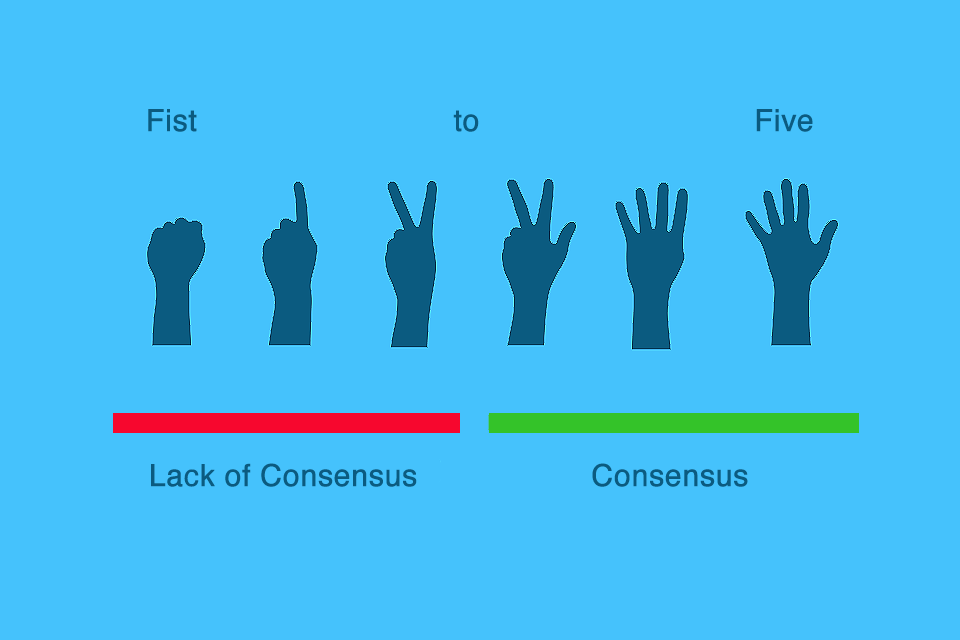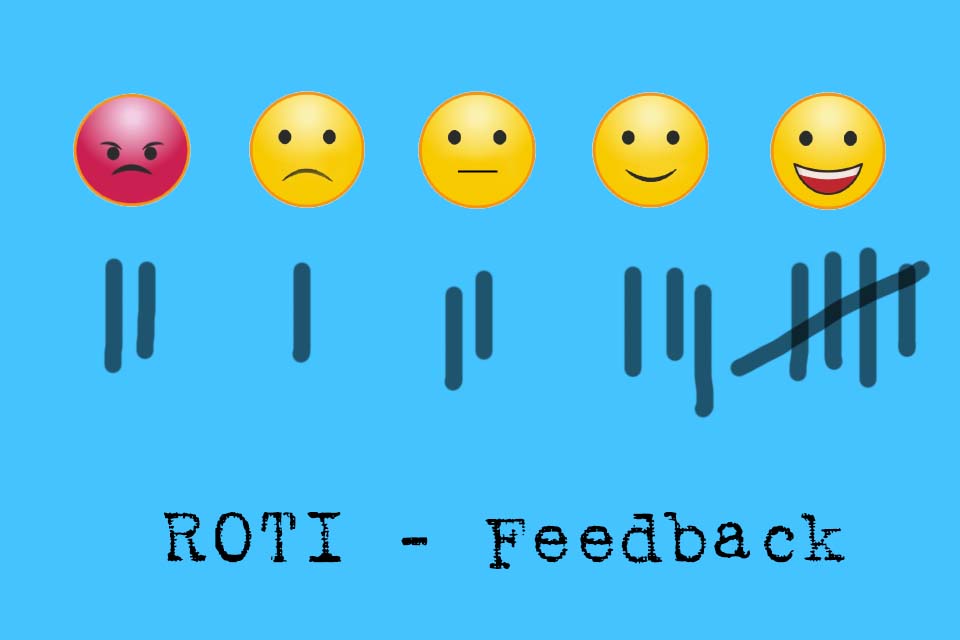What is Fist to Five?
Smartpedia: Fist to Five is an opinion polling format that allows for 6 different hand signals – from a fist (Fist) to the display of 5 (Five) fingers.
Fist to Five – voting by a show of hands
Fist to Five is a simple format for asking for agreement or disagreement on a topic, a proposed solution, an idea, etc. by a show of hands. Each hand signal has a different meaning:
- Fist: “I veto this decision. I cannot support this decision under any circumstances.
- 1 finger – index finger: “I have (major) concerns that need to be heard and resolved immediately.”
- 2 Fingers – index finger and middle finger or thumb and index finger: “I have (minor) concerns that we need to resolve now.”
- 3 fingers – thumb, index finger and middle finger or index finger, middle finger and ring finger: “I have (minor) concerns but can live with the proposal. My concerns should be resolved soon.”
- 4 Fingers – Index finger, middle finger, ring finger and little finger or thumb, index finger, middle finger and ring finger: “I vote in favour.”
- 5 fingers (Five) – Showing open hand: “I am enthusiastic and will actively support implementation.”
While the first three hand signs indicate lack of consensus, the last three hand signs stand for consensus.
Prerequisite for using Fist to Five
Even if Fist to Five appears simple as a format, and it can be easily used
- for making decisions,
- for comparing opinions or
- as a visual feedback method
in projects, in developments, in teams and organisations or in the course of events such as Sprint Planning in Scrum, there are some aspects to consider when using it:
- Each participant in the Fist to Five must be aware of the respective meanings. This is especially important because hand signals are interpreted differently in different cultures: For example, instead of “minor concerns”, the index finger and middle finger could also be understood as a victory sign and therefore as approval. A “reverse” Victory sign – with the back of the hand pointing towards the recipient – is taken as an insult in some countries. The thumb and index finger can also stand for “tick off” or loser. And showing the open hand (five) could also mean that the participant is abstaining from the question.
- There must be agreement on how to proceed after the Fist to Five question. Is one (extroverted) person allowed to represent the opinion of another (introverted) person? What does one person’s veto (Fist) mean when all other people indicate full agreement (Five)? Does a new query follow an objection and what happens if the result remains unchanged, it only marginally “improves” or it even “worsens”?
- And are the consequences of the query clear? Does a person who objects have to justify himself or are his statements taken on an equal footing? Are voting results escalated? And are there perceived or actual consequences for expressing opinions?
So when using Fist to Five, it comes down to two key points:
- Understanding the process and meaning of the show of hands, as well as
- the culture of the organisation and thus how to deal with diverse opinions.
Advantages and disadvantages of Fist to Five
Fist to Five offers some advantages:
- The format is simple and easy to use with practice.
- As long as it is not “artificially complicated”, the procedure can be used quickly – e.g. for polling opinions.
- It helps to initiate an exchange of opinions and decision-making as well as to request feedback.
Under certain circumstances, positive and thus approving expressions of opinion can positively influence the mood in the project, in development, in the team or in the organisation.
And there are also some disadvantages or reservations:
- As a format, it requires some clarification beforehand (see prerequisites for using Fist to Five). Without this clarification, the damage could be greater than the benefit.
- Publicly asking for approval or disapproval can easily create (perceived) pressure. Worried about such pressure, people may change their voting behaviour. Opinions differ, however, as to whether this is a disadvantage of the format or merely reflects the status quo of an organisation (which ideally needs to be improved).
Impuls to discuss:
Where is the format suitable in your organisation, where could it fit and where does it definitely not fit?
Notes:
There are also alternatives with thumb voting, a vote by thumb sign (thumbs up, down and horizontal), or the feedback hand method (thumbs up for “I liked that”, index finger for “I’d like to point that out”, middle finger for “I didn’t like that”, ring finger for “I’ll take that with me” and little finger for “That came up short”).
Here you can find a video on Fist to Five Voting.
And here you will find additional information from our Smartpedia section:



